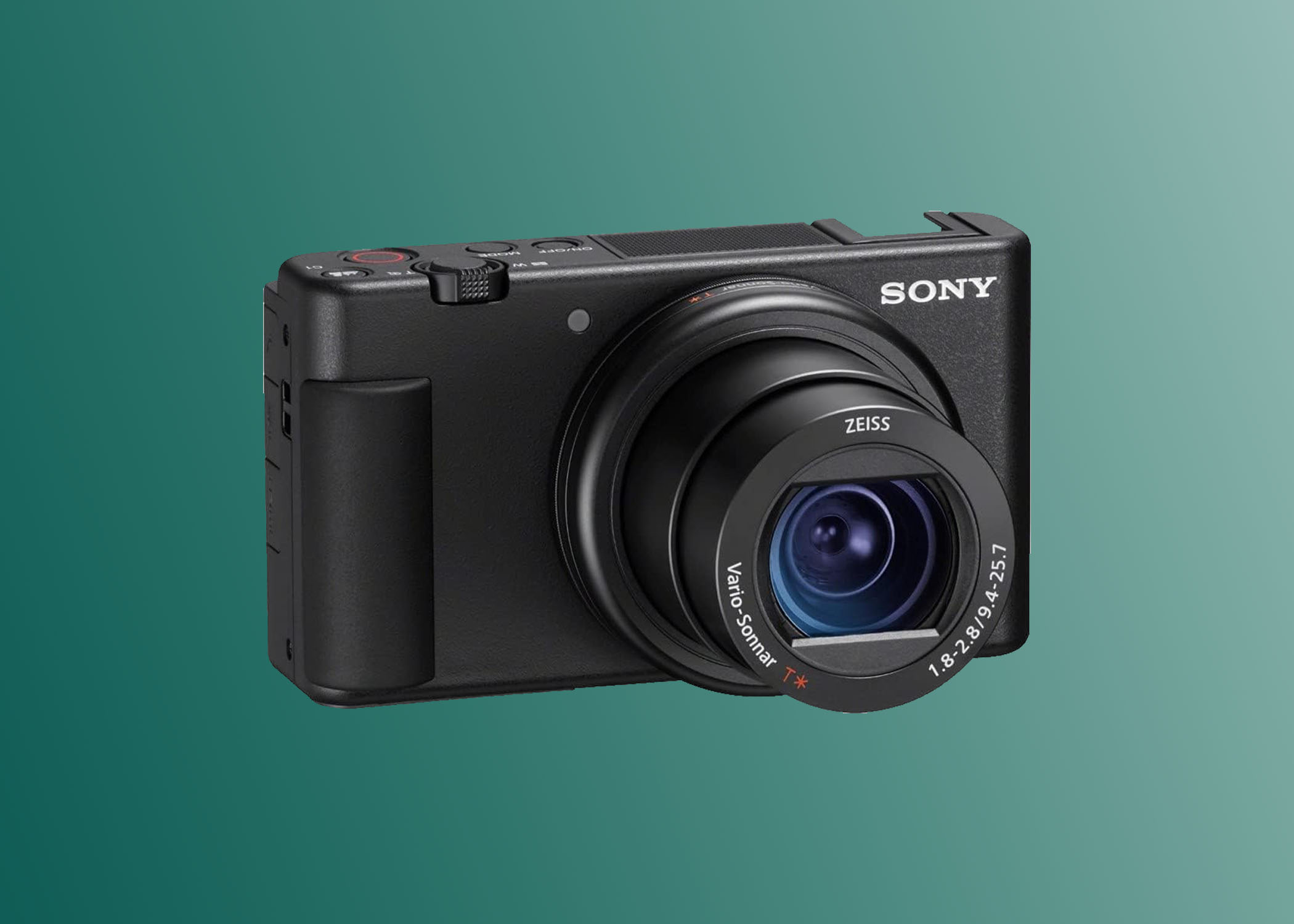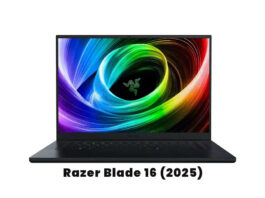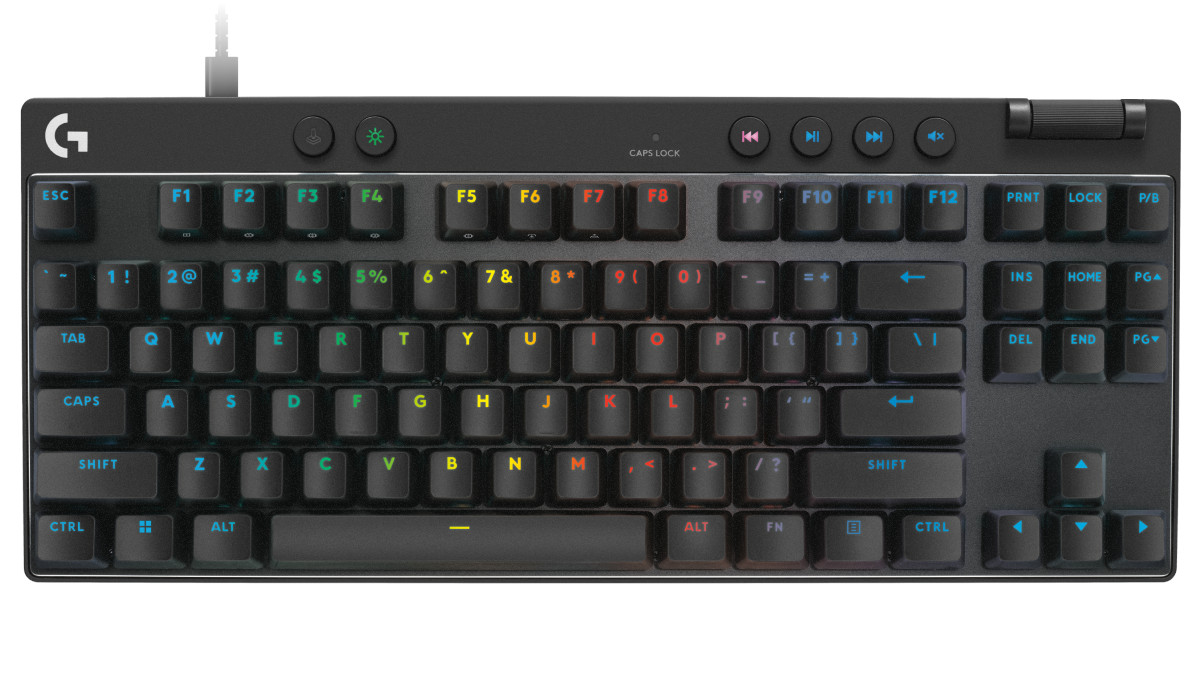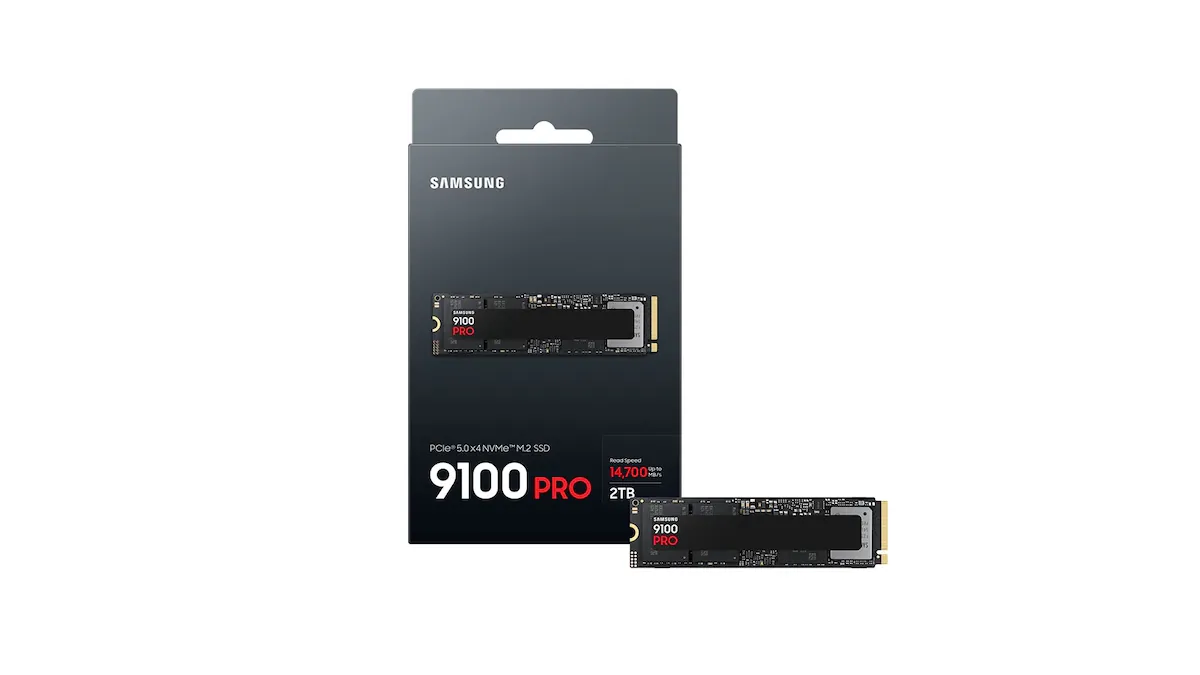The Sony ZV-1 stands out as the top choice for a compact vlogging camera available currently. It combines the finest video characteristics from Sony’s RX100 series, such as its outstanding autofocus system, with design adjustments that suit shooting YouTube content both indoors and outdoors.
Its primary advantage lies in pairing a bright 24-70mm f/1.8-2.8 lens with Sony’s Real-time tracking and Real-time Eye AF systems. Alongside the ZV-1’s 1-inch sensor, which surpasses those in most smartphones, these features facilitate capturing high-quality vlogs with attractive background blur and steady focus.
With a 3.5mm microphone port, it’s relatively simple to incorporate high-quality audio to complement your videos. Additionally, a hotshoe allows the attachment of accessories like a shotgun mic or LED light.
This proves particularly beneficial since, while the ZV-1’s internal three-capsule microphone is an improvement over the built-in mics of the RX100 series and similar compact cameras, it still lacks audio quality matching its video. The bundled windshield is indispensable for shooting in windy conditions.
While the ZV-1 isn’t flawless, alternatives may be worth considering based on your requirements. Its SteadyShot stabilization suffices for walking videos but doesn’t match the smoothness of competitors like the DJI Osmo Pocket, GoPro Hero 8 Black, or larger cameras such as the Olympus E-M5 Mark III. Its strongest stabilization also slightly crops the frame, potentially affecting handheld shots, though this wasn’t a major concern for us.
Despite renamed shortcut buttons aimed at beginners, the ZV-1 isn’t the most user-friendly option for those transitioning from smartphones. Its touchscreen, besides enabling tap-to-focus, doesn’t facilitate navigation through menus like the useful ‘Fn’ grid, and its settings can be labyrinthine; a dedicated section for video novices would be beneficial.
However, the ZV-1’s complexity is balanced by its extensive features, including a built-in ND filter, autofocus sensitivity adjustments, and profiles like S-Log2 for video color grading enthusiasts. Sony also pledges live-streaming software for Windows users starting July 2020. These features make it exceptionally powerful for a compact camera, ensuring its relevance as your skills progress.
Due to its size, the ZV-1 entails some compromises, such as the absence of a headphone jack and average battery life. Moreover, lacking an electronic viewfinder means it may not suit those seeking a stills camera. Nonetheless, it outperforms other compact cameras in terms of power and video capabilities, making it a perfect on-the-go choice for creating content for YouTube or other social media platforms – we believe it’s one of the finest cameras for YouTube.

Sony ZV-1: Cost And Launch Date
Sony released the ZV-1 on May 26, 2020.
It is priced at $749 / £699 / AU$1,299.
Additionally, you have the option to purchase a Bluetooth Grip controller for $138 / £170 / AU$249.
The Sony ZV-1 is available for purchase now, with pre-orders commencing on May 26, 2020. Sony anticipates shipping to commence “in early June” in the US and UK, and “mid-June” in Australia.
This compact vlogging camera is priced at $749 / £699 / AU$1,299, positioning it between the Sony RX100 Mark IV and RX100 Mark V in terms of cost.
Unlike all the cameras in Sony’s RX100 series, the ZV-1 does not feature an electronic viewfinder, which contributes to its affordability. However, it introduces newer functionalities not found in the latter two models, such as Real-time Eye AF autofocus.
The price of the Sony ZV-1 is comparable to its primary competitor, the Canon G7X Mark III. The Canon camera debuted in August 2019 for $750 / £700 / AU$1,100, though it is currently available for slightly less.
Additionally, you can now purchase a shooting grip with an integrated wireless remote for the Sony ZV-1, known as the Sony GP-VPT2BT. This accessory is currently on sale for $138 / £170 / AU$240.
Sony ZV-1: Structure
A newly designed LCD screen that flips to the side is perfect for video.
The inclusion of a hotshoe and 3.5mm port simplifies adding an external microphone.
The absence of the RX100 series’ viewfinder and lens control ring is notable.
The Sony ZV-1 resembles a Sony RX100 Mark V but with alterations tailored for YouTubers. The outcome isn’t flawless, but it does address most of the criticisms we had about the Mark V, particularly regarding video shooting. Alongside the Canon G7X Mark III, it stands out among compact cameras primarily crafted for video production.
Firstly, the highlights. The most notable addition is a side-hinged articulating touchscreen. This type of screen surpasses a tilting one for video recording as it leaves space on the top and bottom of the camera for attaching accessories. Importantly, it also flips 180 degrees to face forward, enabling solo YouTube content creators to frame shots without assistance.
Regrettably, Sony’s touchscreen functionality remains somewhat restricted. While you can tap the screen to adjust focus in video mode, menu navigation or photo zooming isn’t supported. This limitation is disappointing for a camera targeted at those upgrading from smartphones. Nonetheless, the advantage of the side-hinged screen is the availability of space on top of the camera for a hotshoe.
The hotshoe replaces the electronic viewfinder found in Sony’s RX100 series. Losing an integrated EVF would be significant for a camera prioritizing still photography, which should be considered if you require a versatile device for both photo and video. However, for a vlogging camera like the ZV-1, relying on the screen as a viewfinder makes sense for its target users. Moreover, it contributes to reducing the ZV-1’s price, although not to the extent we anticipated.
The ability to attach accessories such as LED lights or external microphones to the hotshoe is a definite advantage. Unlike with the Sony RX100 VII, where an external bracket was necessary for mounting, this isn’t a concern with the ZV-1. This leads us to another benefit for vloggers: a 3.5mm microphone input.
Capturing visually appealing video is pointless without matching audio quality, making a 3.5mm port indispensable for vlogging cameras. The Sony ZV-1 is equipped with an improved built-in microphone on its top plate – a three-directional capsule mic with left, center, and right channels.
Additionally, Sony provides a ‘dead cat’ windshield with the ZV-1, which plugs into the hotshoe to reduce wind noise during outdoor shooting. However, as we’ll discuss later, an external microphone significantly outperforms any built-in option, underscoring the importance of the 3.5mm port.
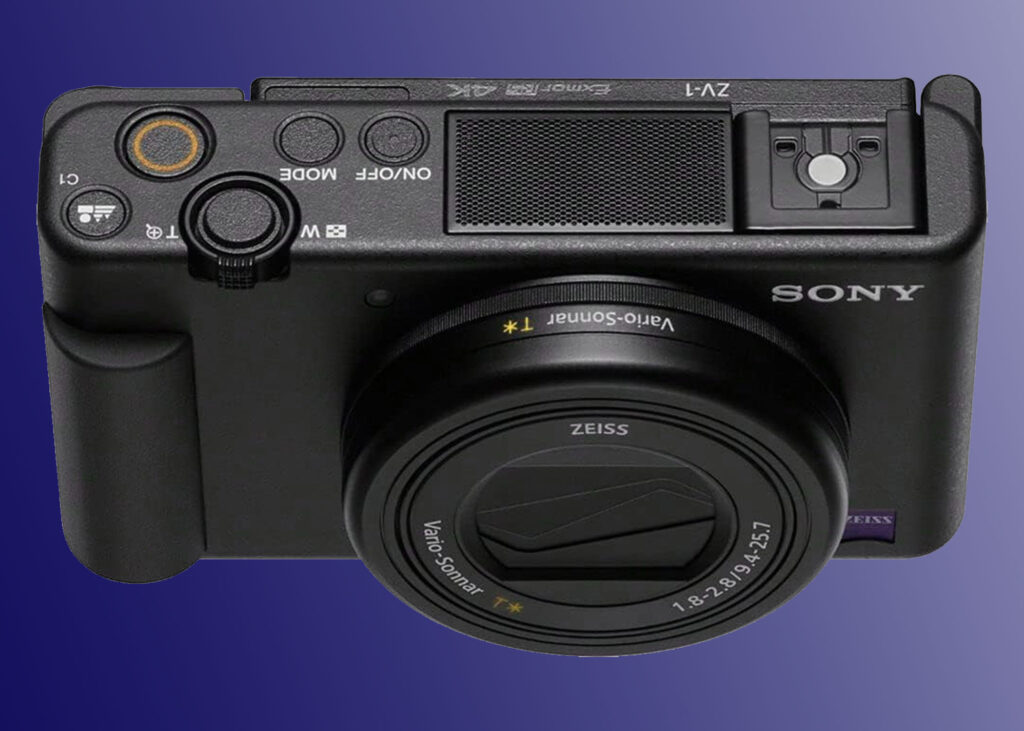
Slightly less welcome is the addition of a microUSB port beneath the microphone port. While not a deal-breaker, modern cameras are expected to feature USB-C ports for fast charging and enhanced convenience. For instance, the Fujifilm X-T4 includes a USB-C headphone adapter for sound monitoring during recordings, a capability lacking in the ZV-1. Nonetheless, the Sony ZV-1 does allow for simultaneous charging and camera use, avoiding complete reliance on outdated charging methods.
The Sony ZV-1 introduces two other useful design modifications absent in the RX100 VII and its predecessors. One is a small handgrip. Although it doesn’t revolutionize the ZV-1’s handling, it’s a feature many RX100-series users have added to their cameras through third-party accessories. Additionally, for the first time in a Sony camera, the video recording button matches the size of the still shutter button.
These may seem minor, but they signify a significant shift. Unlike the RX100 series, they position the ZV-1 as a camera prioritizing video capabilities while still capable in still photography. Despite lacking features like an EVF and lens control ring, the inclusion of a side-flipping screen, hotshoe, and microphone port makes the ZV-1 the ultimate portable tool for vloggers and YouTubers.
Autofocus And Lens
The vlogging autofocus of the Sony Zv-1 stands out with its Real-time Eye AF.
A bright lens with a focal range of 24-70mm and an aperture of f/1.8-2.8 creates a pleasing background blur.
While lacking Animal Eye AF, it includes Real-time Tracking for moving subjects.
The Sony ZV-1 fulfills the demand of many vloggers by combining the lens of the Sony RX100 Mark V (or a slightly modified version) with Sony’s latest Bionz X processor and autofocus capabilities.
Why choose the 24-70mm lens from the Mark V instead of the 24-200mm lens found in the last two Sony RX100 cameras? Because the former is more suitable for vlogging, given its brighter f/1.8-2.8 aperture. This complements the camera’s 1-inch sensor, resulting in videos with pleasing background blur, while still photos benefit from being able to shoot at lower ISOs in similar lighting conditions (albeit sacrificing the longer 200mm reach).
However, the true advantage of the ZV-1 lies in pairing this bright lens with some of Sony’s latest Real-time autofocus technology. This is made possible by the combination of the Bionz X processor (also present in the full-frame Sony Alpha A9 II) and the 1-inch, 20.1MP stacked CMOS sensor, equipped with 315 phase-detect autofocus points covering 65% of the frame.
What does all this translate to in practice? Firstly, the ZV-1’s hybrid autofocus, which combines phase detection with contrast-detect AF systems, ensures faster and more reliable performance for video compared to the contrast-only systems found in competitors like the Canon PowerShot G7 X Mark III.
Additionally, you get Sony’s latest Real-time Tracking and Real-time Eye AF (for people), which are undoubtedly the best available in a compact camera for capturing people and moving subjects. Keeping moving subjects in focus often just requires tapping them on the ZV-1’s screen; with Face and Eye AF tracking enabled, it seamlessly switches to the latter when detecting a person’s face.
This is particularly crucial for a vlogging camera with a bright lens, as maintaining focus on a face can become challenging when shooting at wide apertures like f/1.8. However, apart from instances when we approached the lens too closely, we found that the ZV-1 excellently tracked our eyes across most of the frame.
Sony Zv-1: Characteristics
Comprises two fresh quick-access buttons for novice vloggers
Image profiles provide editing flexibility for proficient vloggers
Slow-motion modes are enjoyable and practical
So, what other video-friendly delights does the Sony ZV-1 possess apart from superb autofocus? A plethora, which may not always be beneficial for ease of use.
Sony’s camera menus are known for being as user-friendly as a cryptic book, and it has made a couple of adjustments to render the ZV-1 somewhat more user-friendly for beginners.
These adjustments encompass two new preset configurations for the camera’s two customizable buttons. The first one, named the ‘Blur switch’, will swiftly switch to a wide-open aperture to create a blurred background in your footage. Unlike smartphone ‘portrait’ modes, there’s no digital manipulation happening here – it’s simply a shortcut rooted in traditional optics.
The second and possibly more advantageous custom button is dubbed ‘Product presentation’, crafted particularly for YouTubers specializing in reviews.
Once again, this doesn’t perform anything beyond what you can accomplish in the settings, but pressing it instantly deactivates both SteadyShot stabilization (making a tripod necessary for this mode) and Face and Eye priority AF. Consequently, when you hold a product up to the camera, it will focus on that rather than prioritizing your face. Due to the ZV-1’s autofocus speed, this functions quite effectively.
Nevertheless, these seem like hastily added solutions, and the ZV-1 otherwise resembles very much an RX100 series compact camera, which is regrettable, especially when comparing the interface to smooth touchscreen applications like Filmic Pro; it can seem antiquated. Prepare to spend considerable time navigating through ZV-1’s menus and configuring custom menus.
To be impartial, this complexity partly stems from the ZV-1 being loaded with features, many of which target advanced video enthusiasts. Consequently, it offers an incredible depth for a compact camera.
For instance, the built-in ND filter makes a welcome return. This feature was discarded in the last two RX100 cameras but is nearly indispensable for achieving smooth movement in videos on bright days, as it permits shooting with slower shutter speeds without needing to close down the lens.
Delve deeper into the menus, and you’ll discover compositional aids like focus peaking and zebra patterns, along with all of Sony’s image profiles including S-Log2, S-Log3, and Hybrid Log Gamma (HLG), for those who prefer to adjust the colors of their footage to extract the maximum dynamic range.
But what about more commonly adjusted settings, such as resolution and frame rate options? Similar to the RX100 Mark VII, the ZV-1 can record 4K at a maximum of 30p. It’s disappointing that it lacks a 4K/60p mode, but its 4K footage is achieved through oversampling rather than pixel binning; the former is a superior technique for capturing a 4K image from the 20.1MP sensor, helping to avoid pixelation and jagged edges.
Certainly, faster frame rates are available if you’re willing to shoot in 1080p, alongside Sony’s remarkable super slow-motion options, which reach up to an astounding 960fps.
Undoubtedly, there’s a noticeable loss of quality here, which we’ll delve into along with the ZV-1’s stabilization and battery life in the performance segment.
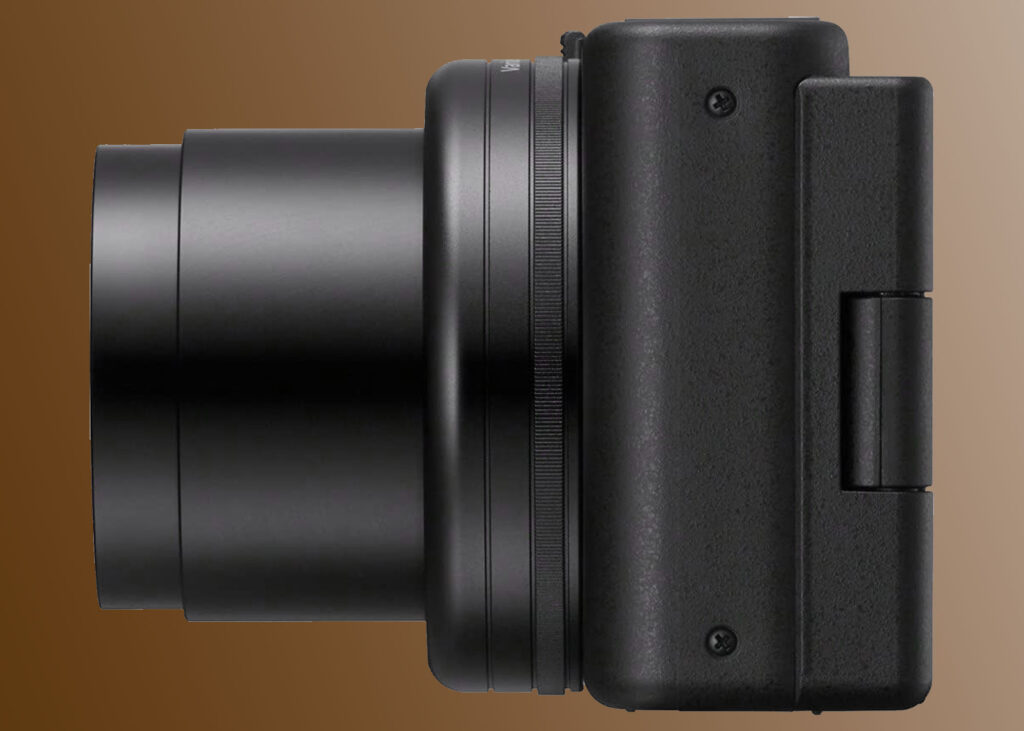
Performance
Enhanced video stabilization falls slightly short of the best available.
The internal microphone is satisfactory, but external microphones are recommended.
Limited battery life necessitates carrying extras for extended shoots.
In addition to excellent autofocus, a front-facing screen, and versatile audio options, vlogging cameras must also possess effective image stabilization to ensure steady handheld footage. Among these features, this is the area where the Sony ZV-1 performs the least effectively.
However, the SteadyShot system on the ZV-1 is not subpar by any means. Its most potent ‘Active’ stabilization mode combines optical and electronic stabilization, and it’s even accessible during 4K shooting. When engaging in walkaround vlogging, this mode becomes indispensable, as demonstrated in our test clips.
The challenge with ‘Active’ stabilization lies in its application of a slight crop to the footage to counteract walking movements. Although not excessively severe, due to the ZV-1’s already somewhat narrow 24mm focal length, it results in minimal space around the subject when holding the camera at arm’s length.
Despite this cropping, which we find acceptable for handheld vlogging, especially considering the remarkable Sony Eye AF focusing, it’s advisable to test it first if your filming primarily involves walking and talking to the camera.
If stabilization is a priority, exploring alternative cameras or accessories might be worthwhile. As seen in our comparison video, both the GoPro Hero 8 Black and DJI Osmo Mobile 3 (used with a smartphone) offer superior stabilization compared to the Sony ZV-1, albeit at the expense of image quality. An optimal solution might involve pairing the Sony ZV-1 with a gimbal like the Zhiyan Crane M2 – we’ll update this review after testing this combination.
The ZV-1’s built-in microphone, featuring three capsules, captures satisfactory audio for a compact camera. The included ‘dead cat’ windshield is essential for windy conditions, as demonstrated in our video.
However, some noise interference from the camera’s focus motors is inevitable. For audio quality matching your videos, an external microphone is recommended. Thankfully, the ZV-1 includes a 3.5mm microphone port, offering various microphone options, from Sony’s ECM-XYST1M Stereo Microphone to discreet options like the Rode Wireless Go. For beginners, a budget-friendly Lavalier mic is an effective means to enhance audio quality, especially for talking to the camera.
On a lighter note, the Sony ZV-1 provides the same slow-motion modes as the RX100 series. Options include 250, 500, and 1000fps, though the latter two significantly reduce resolution and quality. We suggest primarily using the 250fps mode, which pairs well with the ZV-1’s shallow depth of field. Unfortunately, you can only record four-second clips, and setting up slow-motion modes remains somewhat cumbersome.
With numerous processor-intensive recording modes, how does the Sony ZV-1 fare in terms of battery life? As expected, it’s not exceptional – utilizing the same NP-BX1 battery as the RX100 VII, it offers approximately 260 shots or 45 minutes of video recording.
Therefore, carrying spare batteries is advisable, though it’s possible to use the camera while connected to a battery pack or wall charger. Another advantage is the ability to bypass the default five-minute recording limit for 4K video – by setting the ‘auto power off temp’ to ‘high’, recording continues until the battery depletes or the memory card fills up.
In our testing, we managed to record a continuous 4K video clip for 44 minutes using this mode. While the ZV-1 did become warm, it remained manageable to hold, and Sony assures that using this mode won’t harm the camera in any way.
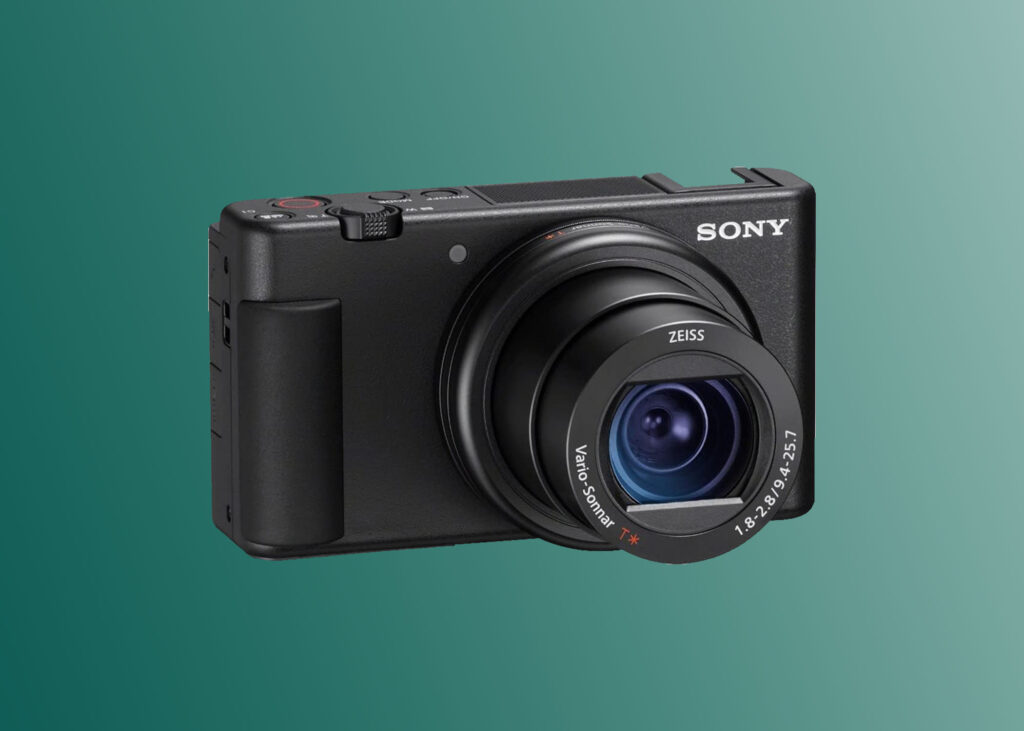
Sony Zv-1: Video And Picture Quality
Captures sharp, detailed 4K/30p video.
The default skin smoothing is somewhat excessive but can be deactivated.
Impressive performance in still photography, but lacks a viewfinder.
Similar to recent Sony RX100 cameras, the ZV-1 oversamples its video content before downsampling it to 4K. This technique yields sharper results compared to alternatives like pixel binning. The 4K footage is notably sharp and detailed, with no cropping unless ‘Active’ stabilization is enabled.
It’s a bit disappointing that the ZV-1 doesn’t offer a 4K/60p option, which would enable smooth slow-motion playback without sacrificing quality. Nevertheless, the 4K/30p mode stands out for its minimal rolling shutter effect, a common issue with CMOS sensors that can distort rapid panning.
The built-in ND filter aids in maintaining smooth motion in bright conditions, although the ZV-1 struggles a bit more in low light due to its 1-inch sensor. For high-contrast scenes, picture profiles like S-Log2 can help extract additional detail, although proficiency in color grading is necessary.
Sony emphasizes the color and exposure accuracy of human faces in ZV-1’s image quality. Utilizing feedback from various sources, Sony claims to have developed an “optimized color algorithm” to ensure natural skin tones regardless of ethnicity. The ZV-1 also leverages face recognition technology for exposure adjustments, ensuring well-lit and properly exposed faces in all situations.
Our experience confirms the effectiveness of these features, although we’ve yet to test them with a diverse range of faces. One adjustment we made was to the ZV-1’s default skin smoothing, which is quite intense; we recommend setting it to ‘low’ or turning it off entirely. Despite Sony’s efforts to make it appear more natural than typical smartphone filters, the stronger skin smoothing settings still tend to look somewhat artificial.
Although primarily geared towards vlogging, the ZV-1 also excels as a still photography camera. While lacking a viewfinder or lens control ring compared to its RX100 counterparts, it still delivers impressive image quality suitable for Instagram-worthy shots to complement YouTube content.
Images exhibit abundant detail, with the ability to recover even more from highlights and shadows when shooting in raw format. Noise remains well managed up to ISO 800, with noticeable degradation in quality only beyond ISO 6400.
While some may argue that modern smartphones rival the ZV-1 in still photography due to computational enhancements, its bright lens and high-speed shooting modes make it a valuable backup for capturing portraits and action scenes. However, those seeking a dedicated stills camera may want to explore other options.
Discover more from NewForTech
Subscribe to get the latest posts sent to your email.

